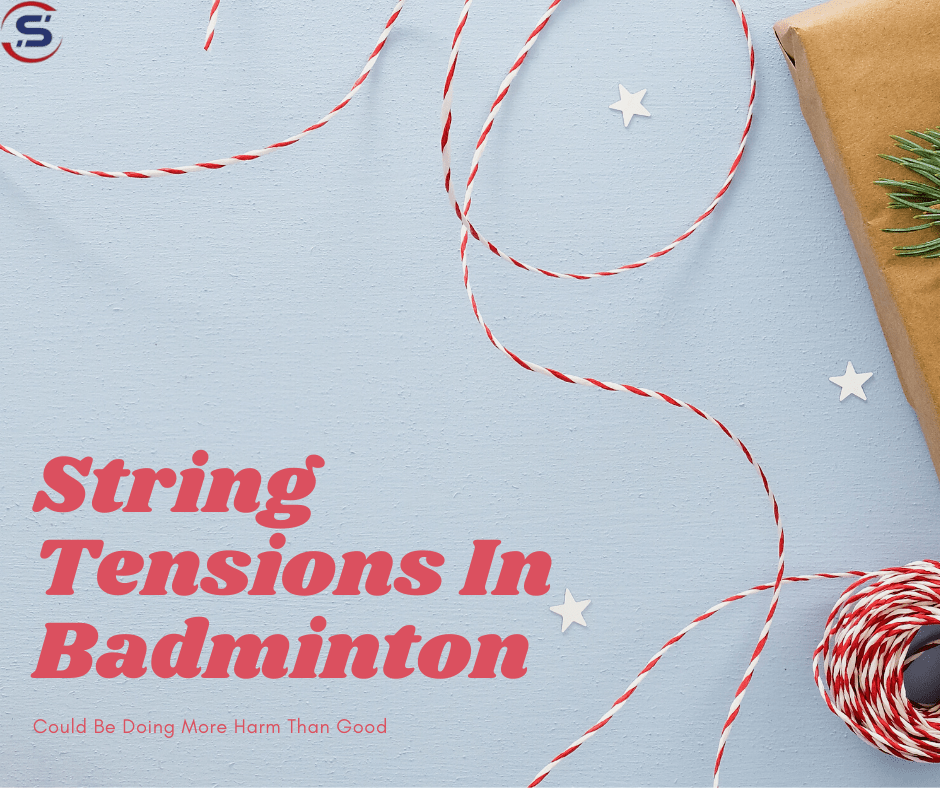The symbiotic nature of the relationship between the player and racket is very important for badminton’s complex world. But amid this precarious equilibrium, the twin specters of egos and misinformation loom ominously. In this article, we will discuss the negative influence of inflated egos and false information about string tensions in badminton and how such factors may actually be reducing player performance instead of enhancing it.
String Tensions in Badminton: Unraveling the Myths
String tension is an essential component of badminton racket modification that affects the performance level and general dynamics of players. Nevertheless, there are many myths and misunderstandings related to this issue; thus, players often make decisions about their string tensions without proper understanding. One common myth is that higher string tensions inherently mean more force and better command. Even though an increase in the level of tension may provide more control, this correlation with power is far from clear-cut as generally believed.
The ideal string tension, in fact, changes from player to player based on their playing style, skill level, and physical attributes. To unwind myths about string tensions entails comprehending the thin line between power and control. A high racket tension that leads to reduced power and increased injury risk is the result of incorrect stringing. Contrastingly, reduced tensions may increase power but result in a loss of accuracy and precision.
The players are advised to try out various string tensions in order to discover the sweet spot that suits their playing dynamics. By promoting the understanding of string tension’s intricate connection to results on the court, coaches and stringing professionals contribute significantly to player education. In turning these myths into dust, players can make rational decisions that give them an upper hand in the game.
Badminton Stringing Practices: Ego’s Effect
Surprisingly, the egos in badminton stringing practices make players opt for choices that are personal preferences rather than an objective reflection. Others, motivated by ego and wanting an image of power and control, will choose to have higher string tensions, not knowing that it may consequently adversely affect their game. Such a process can be intensified in competitive settings, as players might feel pressure to adjust their behavior according to specific standards.
The effect of egos is not limited to individual stringing but also reaches coaching and professional circles. Coaches are inclined due to their own preferences or biases; they often prescribe precise string tensions for the players without taking into account the individualized needs of each athlete. This may hamper players’ growth and prevent an investigation into ideal string arrangements.
Coaches and professionals would do well to stress open communication with their young athletes, allowing them to freely communicate what it is that they want or don’t like without any fear of censure. Creating a supportive and ego-free environment will encourage the badminton community to engage in string practices that are motivated by performance rather than external factors.
The Importance of Correct Information in Maximizing Performance in Badminton
In the world of badminton, which requires both accurate and swift action, there is nothing more important than relaying proper information regarding racket customization. Optimal performance, in turn, depends on players’ access to and understanding of information about string tensions, materials used for strings, and their influence on the playing process. However, there is wrong information and rumors within the badminton world, causing players to get off track while trying to achieve peak performance.
The real solution to get the most out of players is when they are empowered with adequate knowledge of how string tensions influence their play style. However, coaches and experts are instrumental in spreading this information during the complexities of string choices. From understanding the trade-offs between power and control to appreciating the impact of string materials, correct information empowers players to make informed decisions aligned with their unique playing preferences.
Informed Choices: Optimal String Tensions in Badminton
It is the informed choice of string tensions that allows skill sets to reach their full potential. It is about assessing both personal playstyle, strengths, and weaknesses, as well as the unique needs of different adversaries in various scenarios.
This will mean that players must acknowledge the fact that there is no universal approach when it comes to string tensions. The tension required for a power player can be very different from that needed by one who plays with finesse and control. Informed choices involve trying out different levels of tension while practicing and competing matches, keeping track of how each alteration affects shot accuracy, power production, and full-court coverage.
Coaches and stringing professionals are an essential part of the process by guiding players toward making informed decisions. They should facilitate a continuous discourse in which players are able to articulate their lives and preferences. Limiting the mysteriousness of stringing and highlighting preference in setting an appropriate tension encourages players to embrace ownership over their equipment, thus creating a spiritedly intimate relationship with a racket that yields results on the badminton court.
Conclusion
The negative impact of egos on badminton stringing practices requires a mindset change. Players should be focused on the performance rather than on the perception, keeping in mind that string tension is a matter of personal preference, and each player has his/her own type.






![Best Badminton Rackets For All Budgets 2024 – The Complete Guide.[Updated] - Smash Racket Pro](http://smashuk.co/cdn/shop/articles/best-badminton-rackets-for-all-budgets-2024-the-complete-guideupdated-678107_100x80_crop_center@2x.png?v=1744319751)